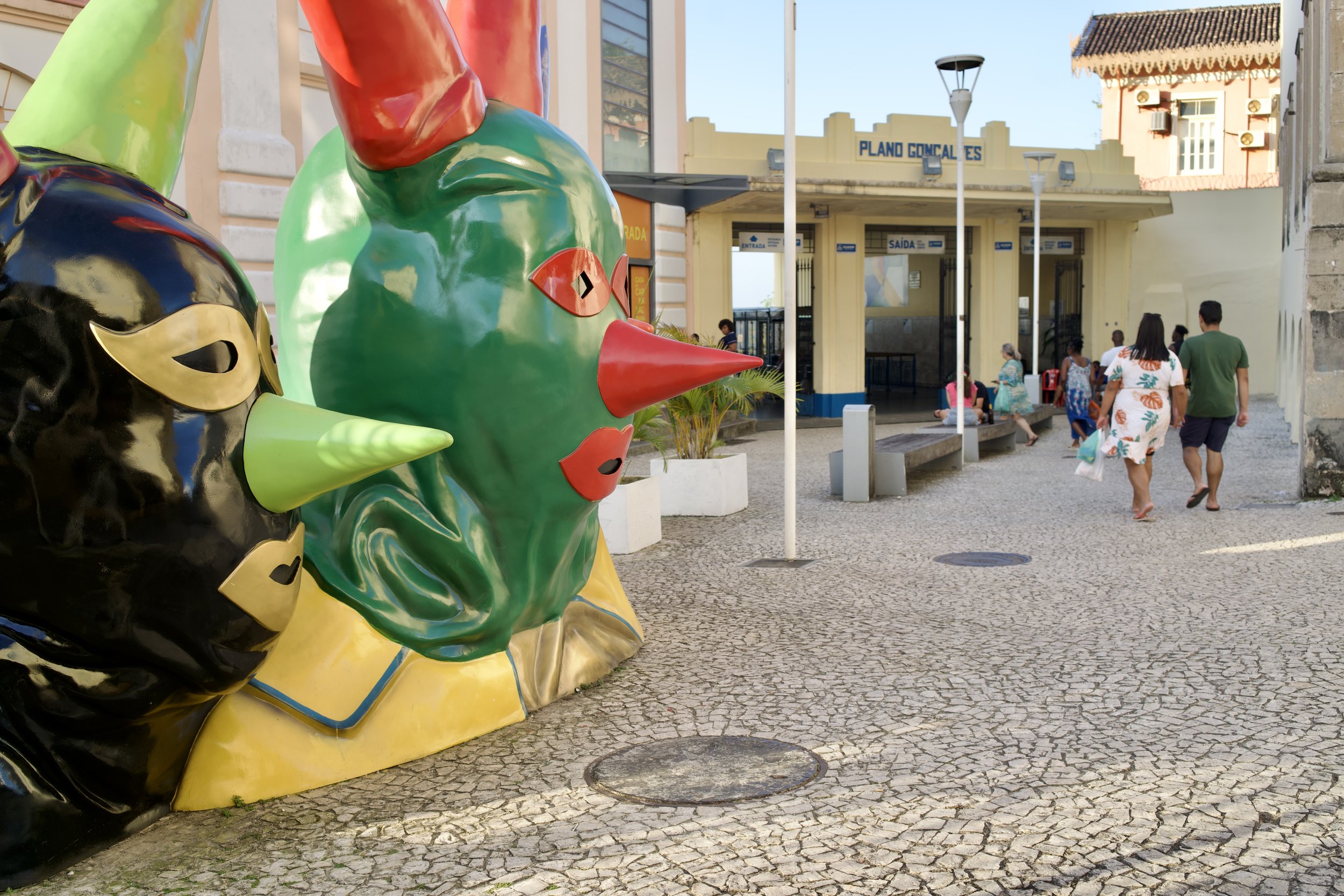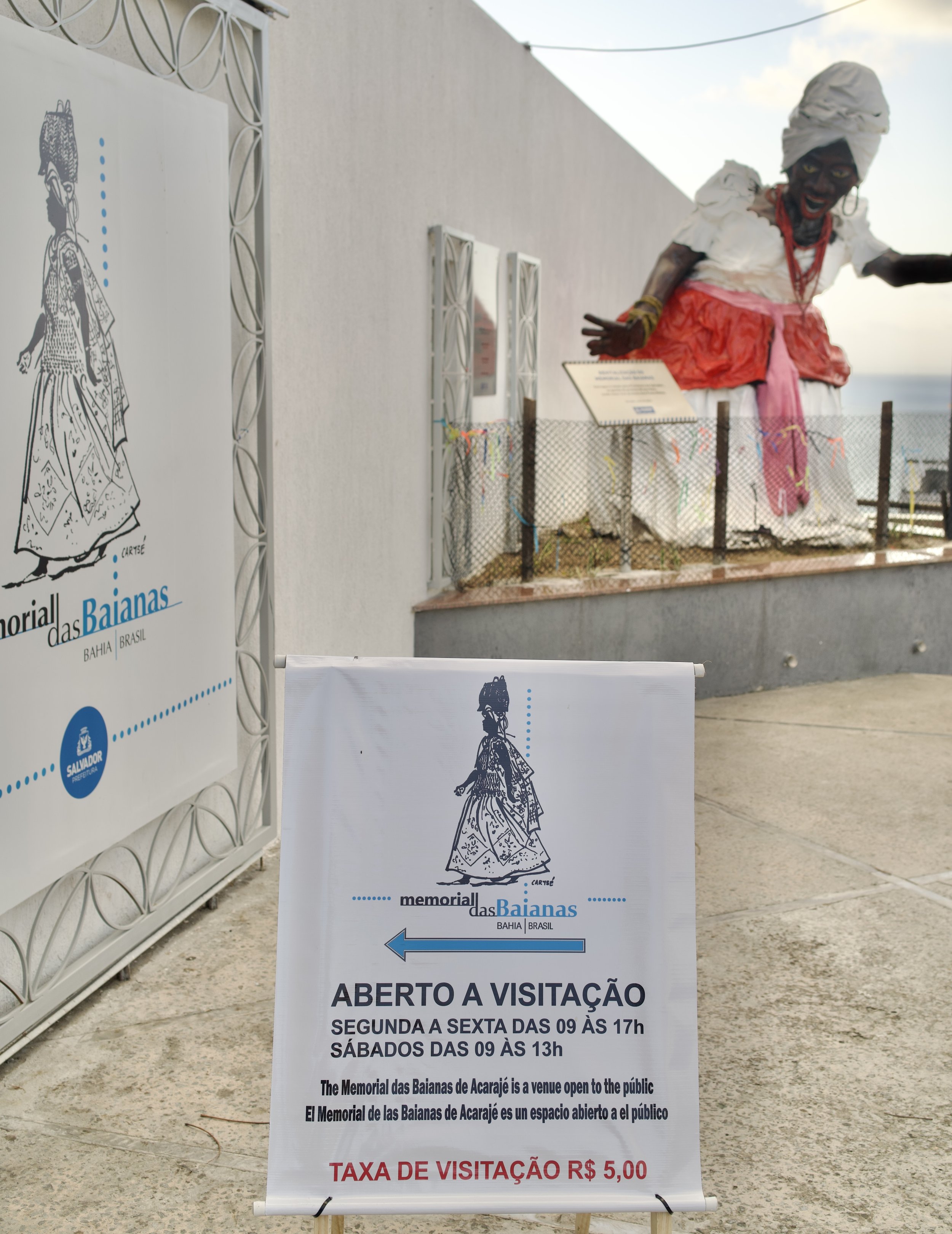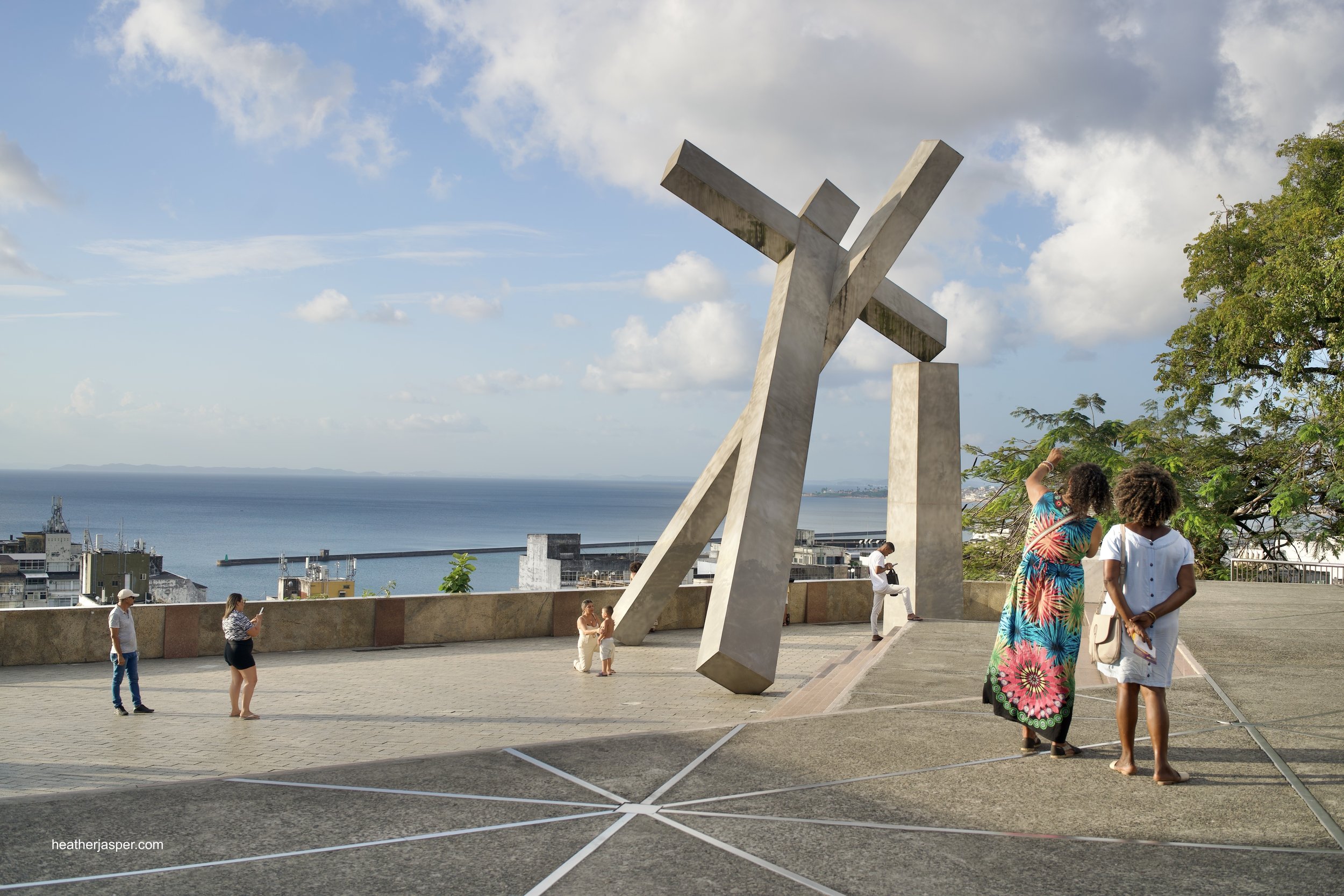Salvador’s Pelourinho
The Carnival Museum is next to the Gonçalves funicular that links Pelourinho in the upper city to Comercio in the lower city.
Pelourinho is the cultural heart of Salvador.
The name means “whipping post” in remembrance of the cruelty of slavery, which built the city. Salvador has been a rich city for hundreds of years precisely because of the slaves used to work the sugar cane fields and build the city. It’s a violent and tragic history, but one that city residents don’t want forgotten.
Despite the heavy history, the neighborhood today is full of joyful music, fabulous restaurants, and engaging museums. It also boasts the best spots to watch the sunset in Salvador.
Balé Folclórico da Bahia
For cultural events, don’t miss the Balé Folclorico da Bahia. There are regular performances three evenings a week and a few times a year are larger performances. Check their website for scheduled performances.
Acarajé
For local culture, you can’t get any more Salvador than acarajé, which is a traditional street food sold at stands all over the touristy parts of town.
Baianas de Acarajé
For hundreds of years, acarajé have been made by women called Baianas. The Memorial das Baianas is the best place to learn about these women, how the tradition started during colonial times and how most Baianas in the beginning were slaves.
Acarajé is made with onions and mashed black eyed peas. The ball of dough is fried in palm oil, which gives it the signature red color. When served, the acarajé is split open and stuffed with shrimp.
The Fallen Cross
Next to the Memorial das Baianas is the Fallen Cross. This is where a church was demolished to make way for train tracks, which have now also been demolished. It’s a great place to watch the sunset.
Salvador is full of churches and Pelourinho has half a dozen in just a few blocks.
The Church and Convent of Saint Francisco (above) is famous for being one of the most lavishly decorated churches. A simple wooden cross (third photo) marks where slaves were allowed to stand during services. They were required to stay in the back, near a separate door, were slave owners couldn’t see them.
Church of Saint Peter of the Clergymen
It was built by the Brotherhood of Saint Peter in 1709 with only one bell tower to avoid taxes from the Portuguese crown. The fountain in the square in front of the church is one of the most common places for people to tie ribbons to make a wish.
The entrance to Pelourinho is by the Igreja Nossa Senhora do Rosário dos Pretos (right). The church still has a mostly Black congregation and evening services include drumming and processions unchanged since the colonial days of slavery.
Zumbi dos Palmares
One of the most important historical markers in Pelourinho, the Zumbi was a leader who fought against slavery. At its height, Palmares was a confederation of five cities of escaped slaves, recognized by the Portuguese crown as an independent nation. The largest of the five cities at one point had three times the population of the capital of São Paulo.
The music of Pelourinho
The streets are full of music and I lost count of how many groups I saw playing music for tips or just for fun. If you’re planning a day in Pelourinho, schedule at least an hour to just walk around and enjoy the sights and sounds in the streets.














